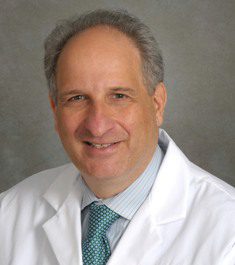Modern Studio Offers Accessible Yoga Classes and Spa-Like Amenities for All Levels
YogaSix, a modern fitness boutique offering a fresh perspective on one of the world’s oldest practices, recently opening up its newest location in Lake Grove on August 30. Located at 139 D Alexander Ave, the new studio introduces people of all ages and abilities to the various health and wellness benefits of the brand’s unique take on yoga, providing a welcoming, modern, and spa-like experience. Leading up to the grand opening on October 11, YogaSix Lake Grove will be offering discounted, unlimited class memberships.
YogaSix Lake Grove is owned and operated by Cristina Givelechian, a passionate yoga enthusiast originally from Romania, who moved to the United States in 1993. Givelechian’s journey into yoga began after reading a book about a Romanian man who was unable to walk, and traditional medicine wasn’t helping him recover. He eventually turned to yoga and fully regained his mobility. Inspired by this story, Givelechian wanted to learn more and began practicing yoga herself, discovering the profound mind-body connection it offers. Over 25 years later, yoga remains her go-to practice for de-stressing and maintaining flexibility and strength.
Givelechian brings a wealth of business experience to YogaSix. With a successful 30-year career in Commercial Banking, she honed her skills in portfolio management and client relations. Inspired by the resilience and entrepreneurial spirit of the business owners she served, Givelechian is determined to create a thriving yoga studio that positively impacts all the communities surrounding the Lake Grove area.
“Throughout my life, I’ve tried all kinds of fitness concepts, but yoga was the one I always came back to,” said Givelechian. “For many people, yoga isn’t something they would typically consider, but the more I talk to them, the more excited they get as they begin to realize the amazing benefits yoga offers. I can’t wait to continue spreading the word about yoga and sharing its incredible benefits with the amazing communities in Lake Grove and surrounding areas.”
A variety of yoga classes are offered at YogaSix to encompass everything from deep stretching, to stress relief, to high intensity training. Offering six core formats: Y6 101, Y6 Restore, Y6 Slow Flow, Y6 Hot, Y6 Power, Y6 Sculpt Flow. Each class caters to every fitness level and strengthens the mind-body connection.
The new studio plans to make an impression with its unique, modern version of yoga and fully sensory experience featuring state-of-the-art heating system, sound and lights, high-quality cushioned performance flooring, cool eucalyptus towels, aroma-therapy, and chic retail boutique. Particularly notable is the use of simple language instead of Sanskrit to describe poses, as the traditional language can be intimidating to newcomers. The studio provides class options for everybody, from beginners to athletes seeking recovery to more advanced students, in a judgement-free, welcoming, and supportive environment. New students are always greeted by a wellness advisor when they enter the studio to educate and empower them before they engage in a YogaSix experience.
YogaSix Lake Grove is open seven days a week with up to 6 classes daily, from 6am to 8pm. Monthly memberships are available for four, eight or unlimited visits per month, as well as drop-in options. More information about the new studio can be found at www.yogasix.com/location/lake-grove and the studio can be contacted by email at [email protected], or by phone at (631) 418-8959.






















